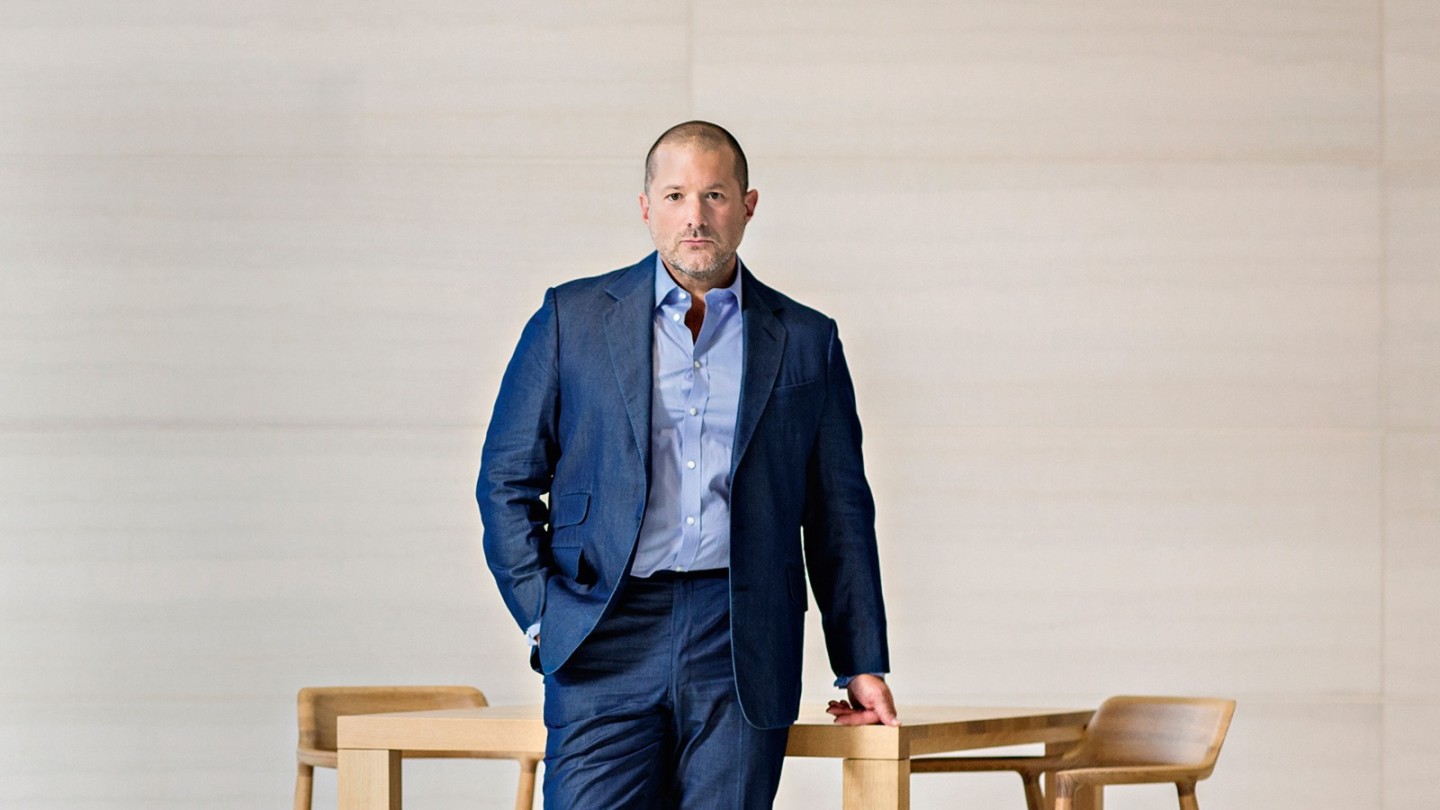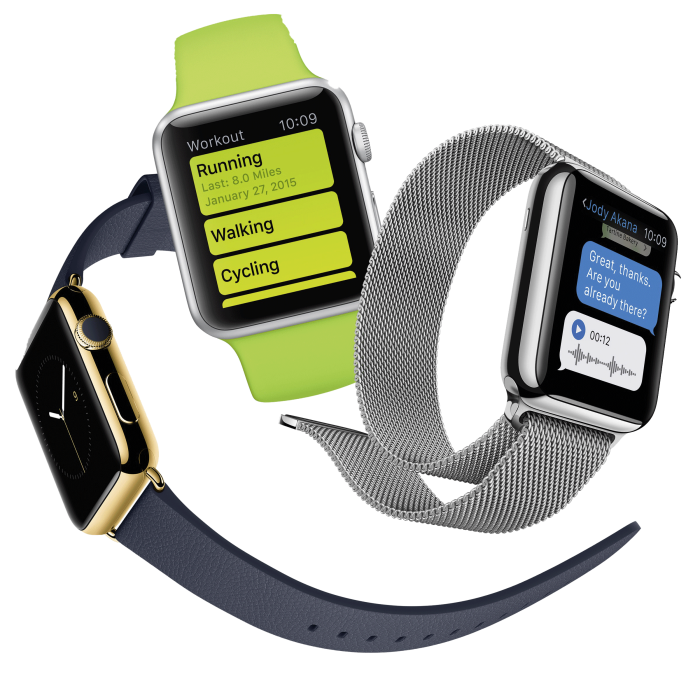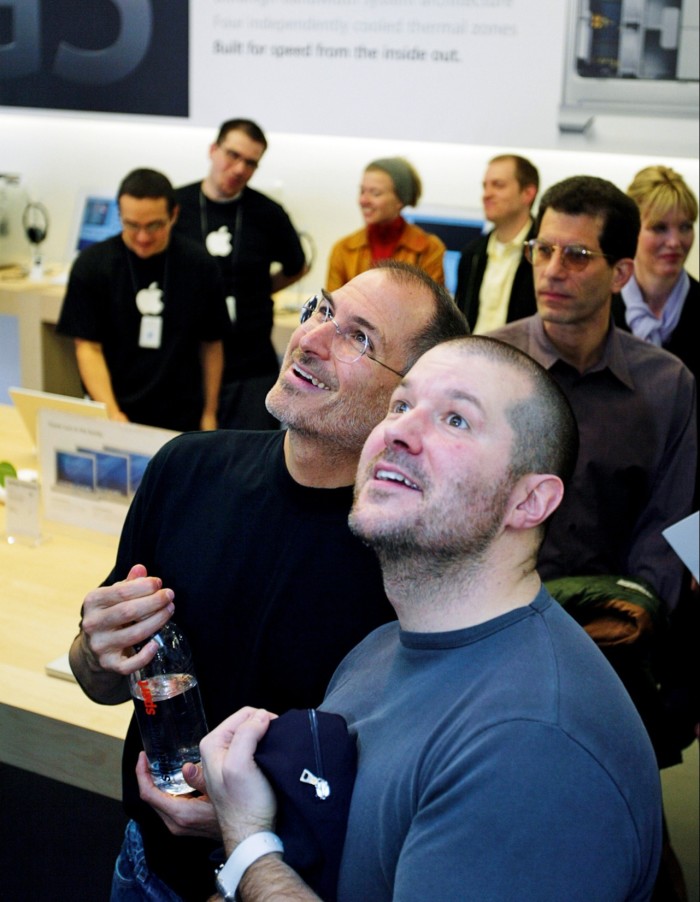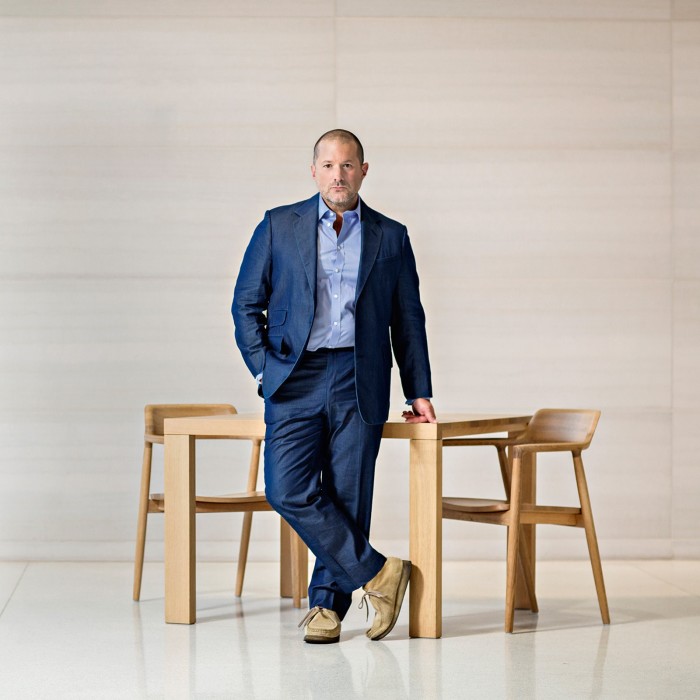Jony Ive: the man behind the Apple Watch

Roula Khalaf, Editor of the FT, selects her favourite stories in this weekly newsletter.
The Cupertino headquarters of Apple can only be described as an anticlimax. Perhaps it was a bit much to expect an American version of James Bond’s Q Branch, but the Apple “campus” is disappointingly… well… normal.
Once upon a time, when Steve Jobs was a lad, much of this patch of northern California was covered with orchards. Now it is where the future is made. And the avidly anticipated Apple Watch, promised next month, is Apple’s next bold bid to shape our tomorrows.
But the most futuristic thing about Apple HQ is its address: No 1 Infinite Loop. Rather like a medieval fortress, it is built around a central grass courtyard. Here people hold meetings, sit tapping away on Apple devices or sip from big paper beakers of fashionably complicated coffee. In short, it is the sort of scene you might encounter at your local artisan coffee shop, the customers hunched over MacBook Airs or iPads. Apple devices have woven themselves so seamlessly into the tapestries of our lives – doing things that until recently would have been the stuff of science fiction – that we take them for granted.

The hold Apple has on the popular imagination is one of the defining characteristics of life in the early 21st century. Its product launches are events of mass hysteria, and its reach can be compared to that of the Ford Motor Company during the days of the Model T, when half the cars in the world were Fords, inspiring Aldous Huxley to set his dystopian masterpiece Brave New World in the year AF (After Ford) 632 (ie, AD 2540, 632 years after the launch of the Model T).
As a relative newcomer to Apple devices, first using the telephone, then the tablet and finally – in preparation for meeting senior vice president of design Jonathan Ive (“Jony” to you and me, Sir Jonathan to the Queen) – getting to grips with the computer itself, I have been most struck by the way in which its products link up. Web pages consulted on the computer appear on the telephone; telephone calls can be answered on the computer; emails are commenced on one machine and completed on another. Hardware and software seem designed together in such a way that one cannot quite tell where the machine ends and the operating system begins. As a commercial strategy it is undeniably brilliant, quickly enveloping users in a world they do not want to leave. But it is the clairvoyant ingenuity of it all that makes me marvel.
Doubtless there are people in remote parts of the Amazon who are unaware of the iPhone… but then, mobile reception is probably not great where they live anyway. For the rest of us, Apple is just there – not merely physically, in the form of its products, but seeping into our culture: the use of the “i”.

One could easily forget that Apple did not invent the letter “i”, nor indeed the mobile phone or the computer. But it has appropriated them in a way that has made the brand the most valuable on earth. There is a story that movement in the Apple share price can influence the value of the dollar. Whatever the reality of that, towards the end of last year Apple became the first public company ever valued at $700bn.
In great part, that valuation rests on the shoulders of a 48-year-old Englishman. Yet as he lopes towards me down the corridor, in his comfortable suede shoes, bright-blue trousers and baggy, long-sleeved yellow top, his kindly features creased up in a welcoming grin, those broad shoulders seem remarkably unbowed.
Ive is arguably the most influential designer in the world, and yet he does that slightly disingenuous self-effacement thing characteristic of confident people who say they are just part of a team. There is a gentleness about him. He talks quietly and articulately in an accent unaffected by two decades in America. Even when he describes those who copy Apple as little better than thieves, it is with a smile and softness of tone that suggests he would far rather the unpleasant subject had never been brought up.
The son of a silversmith, Ive did not choose a career; it chose him. “I wasn’t sure what the activity was called, but when I was seven or eight, I knew that I enjoyed drawing and making, and that the drawing was in service of the making. I didn’t really know that this was called design. I was just fascinated by our physical environment and intrigued by why things were the way they were. ‘Why is the handle on the top?’, ‘Why is the hinge that shape?’” This curiosity continues to define him today. “I see design as a way you look at the world and as a thought process.”

After art school, he joined a design studio. His Damascene moment came in the boardroom of a Staffordshire sanitaryware company when he found himself in a bruising meeting with the CEO, who told him that his basin pedestal risked toppling onto people. Iacta alea est.
Ive took a new direction and in 1992 he joined Apple in California, a strange choice for a man who had always felt more comfortable with a pencil in his hand. “I was inherently sceptical and didn’t like using a computer at art school. I remember discovering the Mac just at the end of my course. What shocked me was that via this object I became aware of the people who had designed, developed and made it. So in a way I wasn’t actually that interested in the Mac itself, but did have a clear sense of the humanity within it. For example, there was the fact that you could change the sounds it made. I think you start to develop a relationship with the product, in that you feel it’s the result of the great care taken by the people who worked together to develop it. And you respond to that.” So it was not the lure of designing computers but of creating technical objects that people could make their own that drew him to northern California.
However, it was only when Steve Jobs returned to effect the Lazaran revival of the firm that had forced him out a decade or so earlier that Jony Ive finally got to be… well… Jony Ive. “There wasn’t the vision and there wasn’t that clear notion of the company’s identity and what it stood for. That didn’t really come back until Jobs himself returned to the company.
“It’s easy to forget this now, but back in the 1990s the preoccupation was with technology. The conversation was about chip speed and hard-drive size. We moved that on to include: ‘What colour do I want?’” The product that brought the colour question into computing was also the first iProduct – the iMac – a computer distinguished by multicoloured translucent casings. The iMac was the start of many things for the company and for Ive personally, most important being a deep friendship with Jobs.
For most people, Jobs has entered the canon of historical personalities: a figure on stage in John Lennon-like glasses and a black turtleneck, holding up some newly launched piece of equipment; a semi-mythical character who was feared and revered. But to Ive, he was someone with whom he and his family would go on holiday. “We had lunch together pretty much every day. He would spend many afternoons a week in the design studio, and we became very close friends.”
Perhaps the least emotionally loaded way of describing Jobs would be intense. There is also some of that intensity about the way Ive works, and it is this professional focus that liberates him from worrying too much about Apple’s share price and its effect on the US dollar. He says the design team is not “distracted by or overly concerned with the ramifications of what we do, because we’re so consumed by design and trying to solve problems. I think being fanatical and myopic are fundamental to our approach.” When asked how many Apple Watches the company will sell, he answers: “I’m much more concerned about how we can make them as good as possible than how many we’ll sell. We’re brutally self-critical and go through countless iterations of each product.”

If the iMac introduced fashion into computing, then the latest addition to the Apple family, Apple Watch, is bringing fashion, technology and luxury another step closer together. High-profile Apple hirings in the past couple of years include the former CEOs of Yves Saint Laurent and Burberry. Add to this the fact that Marc Newson – who’s designed products for Jaeger-LeCoultre, Hermès and Louis Vuitton, among others – is also collaborating on design, and it’s clear just how serious Apple is about entering the luxury market.
This seriousness begins with the design of the products. “Even now, when the design of the Apple Watch is incredibly mature and has gone through thousands and thousands of hours of evaluation and testing, we’re still working and improving. You are trying to keep everything fluid for as long as possible because everything is so interconnected. The best products are those where you have optimised each attribute while being very conscious of other parts of the product’s performance.” (Talking of performance, when the issue of the frequent need to recharge the iPhone is raised, he answers that it’s because it’s so light and thin that we use it so much and therefore deplete the battery. With a bigger battery it would be heavier, more cumbersome, less “compelling”.)
Certainly, compared to the bigger men’s timepieces of recent years, the Apple Watch is far from overbearing on the wrist and allows Ive to exploit the advances in miniaturisation that have become less obvious in these days of large phones. This is not, he says, a departure from Apple’s core (excuse the pun). “It’s technology worn on the wrist. I sensed there was an inevitability to it.” Seen in the Silicon Valley context of, say, now discontinued Google Glass, Apple is backing another part of the human body where you can put wearable technology. Ive is nothing if not pragmatic, and the accessibility of the wrist looks as good to him as it did to Louis Cartier over a century ago, when he designed a wristwatch for belle-époque dandy and aviator Alberto Santos-Dumont so he could pilot his aircraft without having to fish around in his pocket for his watch.
“One of the things that struck me,” says Ive, “was how often I’d look at my watch and have to look again quite soon afterwards, because I hadn’t actually comprehended what the time was. If I had looked at something on my phone, because of the investment involved in taking it out of my pocket or my bag, I would certainly pay attention. I quite like this sense of almost being careless and just glancing. I think for certain things the wrist is the perfect place for this technology.”
However, it was not without some trepidation that he embarked on the watch. “It was different with the phone – all of us working on the first iPhone were driven by an absolute disdain for the cellphones we were using at the time. That’s not the case here. We’re a group of people who love our watches. So we’re working on something, yet have a high regard for what currently exists.”
He believes it was the intimacy of the watch that made it desirable, almost necessary, for Apple to tackle. “What’s unusual about Apple is that we have a very small and focused portfolio of products, so everything we make is important. And while the watch is an extension of the phone’s functionality, it’s a new platform for us. We’ve invested a lot of money and have wrestled with the issues.” If Apple has got it right, it will have placed one of its products on the human body, embedding the culture of Cupertino more deeply in our lives. No pressure then.
Do I detect a slight tension in the shoulders?
Perhaps, but the weight of corporate expectation is only summoned to be dismissed. “I think of what preoccupied Steve in the 1970s: it was making the unobtainable power of the computer personal. And when he came back to Apple in 1996, the first thing we worked on together was the iMac, which was a personal consumer computer. So I think Apple’s contribution has always been at its most significant when it’s trying to make personal products. And this watch is clearly the most personal product we’ve made.”
Apple is far from the first company to tackle the smart watch, but it is tackling it like only Apple can, with metallurgists, engineers, chemists, mathematicians, tanneries, testing facilities and all the other resources at the disposal of the world’s most valuable company – resources that are then passed through the filter of a design culture shaped by Ive.
I would hazard a wild guess that 19th-century neogothic ecclesiastical architect and designer Augustus Pugin is not frequently discussed in Cupertino, but Ive invokes his name to discuss the moral purpose of design. He chooses his words carefully. “This is difficult to describe and it could be misinterpreted very easily, but there is a sense of almost serving your fellow humans. While people might not be able to articulate why they care and why they prefer one thing over the other, I really think that most people are very discerning.”
If God is in the design, then the devil is in the detail, and it is with this sort of obsessive care that Ive and his team tackle every aspect of the design. He runs through the three ranges of Apple Watch with their different materials – the stainless-steel Apple Watch (price as yet unconfirmed), the anodised-aluminium Apple Watch Sport (from $349) and the Apple Watch Edition in 18ct yellow or rose gold (with an as yet unconfirmed price of around $4,500) – and almost infinite combinations of colours and aesthetics.
The strap options alone are dazzling: there are ribbons of metal mesh that loop through each other to be held in place by magnets; there are others that click into place both mechanically and magnetically; there are straps of quilted leather; straps of fluoroelastomer; metal bracelets with easily removable links; bracelets that can be swapped in and out.
Ive explains how the molecules in Apple gold are closer together, making it twice as hard as standard gold. And, in case you were wondering, Apple’s cold-forged steel is 40 per cent more durable than regular steel. He plays with the watches, caressing their crowns and tapping their faces to coax a polychromatic panoply of functions across the little screens, whether to check heart rate or change the time display from Mickey Mouse to an orrery that simulates the alignment of the planets in our solar system today, tomorrow, 10, 20, 200 years hence. In Ive’s hands, the tiny device seems almost alive, an impression enhanced by the variety of anthropomorphic words he uses to describe individual aspects; “little fellow”, “chap” and “this little guy” are the ways in which he identifies a cleaning cloth, a charging port and a strap closure. It is charming and unaffected, as if he is explaining it to one of his children.
But the thinking is grown up and sophisticated and extends far beyond the watch. “We didn’t want the packaging to be a sort of shorthand for value, where the box needs to be big and we have to include expensive materials. We’ve always liked the idea that if we are heavy in our thinking, we can be much lighter in the implementation. So there’s huge virtue, I think, in keeping the packaging small: at least, it is the right choice environmentally, it’s easier to move things around and you don’t end up with your wardrobes full of large watch boxes that you don’t use.” Thus, the box of the top-of-the‑range watch is aniline-dyed leather on the outside and a “sort of ultra- suede on the inside” – so far, so conventional, but there is a connector at the back that turns it into a charging dock when the watch snaps into place thanks to magnetic technology. “I like the idea that it’s all part of one experience, it’s all part of how we feel about something, and that each of these elements can play a positive and interesting role.”
Nothing escapes this forensic level of thinking. Nothing is left to chance. Nothing goes uncalculated and untested. Before I leave, Ive holds up the watch’s white outer box. Almost imperceptibly, the bottom begins to move, obeying the law of gravity that pulls it away from its other half. It is graceful, calming… and far from accidental. “We work out what we feel is the optimum time for it to drop and then we back off that and work on the tolerances, and even work on the friction of the materials we use. I mean, that’s fanaticism,” he says, with a little smile. If only more fanatics were like Jony Ive.
235 Regent Street, London W1 (020-7153 9000; apple.com) and branches.
Comments